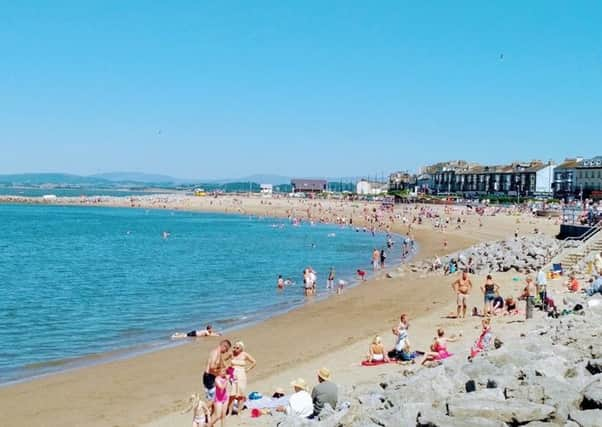Lancaster and Morecambe heatwave hotter and drier than 1976


Figures from Lancaster University’s Hazelrigg Weather Station show that June 2018 was even hotter than June 1976, when a three month heatwave caused a severe drought across the UK.
Only June 1970 was hotter and drier since the records began in 1966.
Advertisement
Hide AdAdvertisement
Hide AdThe Met Office has predicted more hot, dry weather for the north of England as we head into July.
Wildfires have been raging across Lancashire over the last week, and United Utilities have urged people to conserve water wherever possible, however there is currently no hosepipe ban in place.
The county’s gritters have been out treating roads with granite dust to stop them melting in the heat, while children at Our Lady’s Catholic College have been told they can come to school in their PE kits until further notice.
Thousands of people took to the beach at Morecambe over the weekend to bask in temperatures of up to 29 Degrees Celsius.
Advertisement
Hide AdAdvertisement
Hide AdThe current heatwave has led to road surfaces softening in some places, which can then stick to vehicle tyres, and make the surface slippery.
Gritters have been putting down granite dust on sticky spots to provide a protective layer, and improve skid resistance.
County Councillor Keith Iddon, cabinet member for highways and transport, said: “The prolonged spell of hot weather is causing the bitumen to soften on roads all over the country. The problem is that it can start to stick to car tyres, damaging the road by stripping the surface off, and become slippery, which is a potential safety problem.
“We’ve been using around six of our gritting fleet to apply granite dust where this is happening. This creates a barrier to stop it sticking to people’s tyres, and improve skid resistance.
Advertisement
Hide AdAdvertisement
Hide Ad“Now this problem has started it will carry on until the weather cools off so we’re sending the gritters out every day at the moment to those places where we know this is a problem, as well as responding to any new locations picked up by our inspectors or reported by the public.
“In some places we’re also putting out signs with advisory speed limits to encourage vehicles to slow down for safety.
“It’s not the first time we’ve had to do this in Lancashire, and our climate means that it doesn’t happen very often. If permanent damage is caused to any of the network, and once the weather cools down, we’ll assess these locations for any repairs which may be needed.
“In the meantime, I’d ask people to take particular care on the roads, observe any advisory speed limits in place, and report any problems to us which we may not already be aware of.”